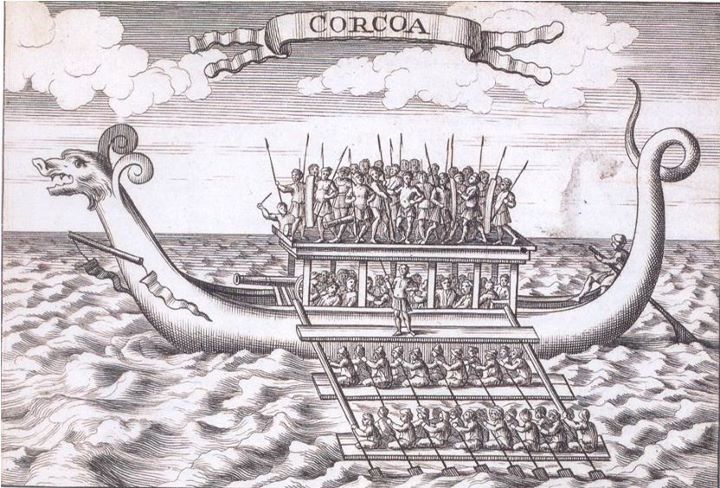 |
| Right photo - MT3 from Callao Cave, oldest human remain from the Philippines to date (Courtesy of Dr. Armand Mijares) Left photo - Xiao Chua looks at skullcap of the Tabon Cave Woman |
Only when I went to the University of the Philippines Diliman and took my first history class under Prof. Carlos Tatel that I learned that as early as the 1970s, the Beyer theory was already challenged and most in the academe does not believe it anymore! Although the aetas came here using land bridges, that’s the only verifiable thing from the theory. Shock.
 |
| The Austronesian-Speaking World (Courtesy of Dr. Peter Bellwood) |
According to F. Landa Jocano, there were already people who evolved from here. According to archaeologists, evidence can be found from stone tools left by the so-called Homo erectus philippinensis in a Cagayan Valley cave (500,000/250,000 BC) and the Homo sapiens in Novaliches (150,000 - 100,000 BC) as well as the human remains of a woman (skullcap and jaw) found in Tabon Cave of a homo sapiens sapiens (28,000 - 7,000/5,000 BC). Dr. Armand Mijares and his team recently found what is now believed to be the oldest human remains in the country, a third metatarsal bone of a foot found in Callao Cave in Cagayan, that predates the Tabon Man, 67,000 years ago.
 |
| Xiao Chua with Wilhelm Solheim & Peter Bellwood The 18th Indo-Pacific Prehistory Association (IPPA) Congress, NISMED Auditorium, UP Diliman, March 2006 |
But the group of ancestors who can culturally explain our race are what social scientists call the Austronesians. Originally it is a term ascribed for the southern (from the Latin auster, south winds) island (from the Greek nêsos) language family that spread across Southeast Asia. There are two competing hypothesis on the origin of the group of people that spoke these languages. Wilhelm Solheim II, the father of Southeast Asian Archaeology believed that these people he called “Nusantao” came from the Sulu-Celebes area. This is island origin hypothesis that theorizes that the peoples of Southeast Asia spread from the islands through networks of trade, intermarriages and migrations.
This was challenged by a younger archaeologist Peter Bellwood, who found different jade lingling-os or earrings across Southeast Asia with almost the same design, hinting that the Austronesians came “out of Taiwan” some 5,000 to 1,500 BC to the Philippine Islands. In whatever case, the two theories can agree that the Filipinos were one of the first Austronesians and that, as I was told by Bellwood himself, a sophisticated maritime culture developed in these islands and with the use of outrigger canoes, the spread of people became possible in Southeast Asia, Oceania, New Zealand, Hawaii and as far as Easter Island in South America and Madagascar in Africa!
 |
| Caracoa, warship of the Austronesians, was the basis of ship shown in AMAYA. |
Therefore, despite the 171 languages and culture in the Philippines, we can have a basis of unity through our base culture of our Austronesian speaking ancestors.
(as written)
(Reprinted with permission from Prof. Michael Charleston Briones Chua)
_____
Source:
Chua, Xiao. WALKING HISTORY: WE DID NOT COME FROM THE ITA, INDONES & MALAY,
Good Morning Philippines. 9 November 2011
No comments:
Post a Comment